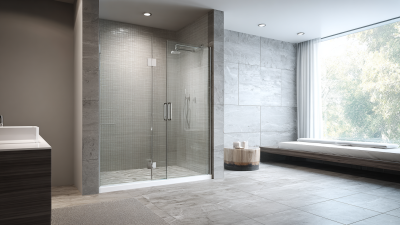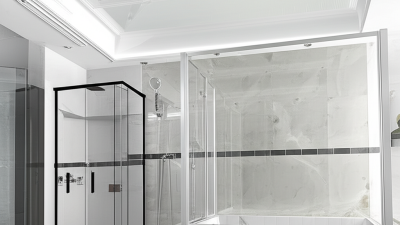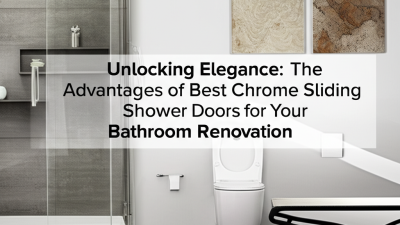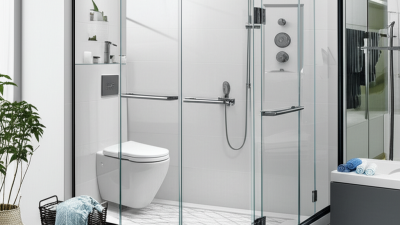- +8613567125921
- +8613567125921
- office@hzkf-bath.com
- 1224594647
Choosing the right sliding shower door is a critical decision that can enhance both the functionality and aesthetic appeal of your bathroom. According to a recent report by the National Kitchen and Bath Association, 70% of homeowners are focusing on bathroom upgrades, making it one of the most vibrant trends in home renovation. A well-selected sliding shower door not only maximizes space but also complements various design styles, from contemporary to classic. With the average cost of a bathroom remodel reaching over $10,000, investing in a quality sliding shower door can significantly elevate your space without breaking the bank. This guide will help you navigate through the various options available, ensuring that you choose the perfect sliding shower door that aligns with your bathroom style and meets your practical needs.
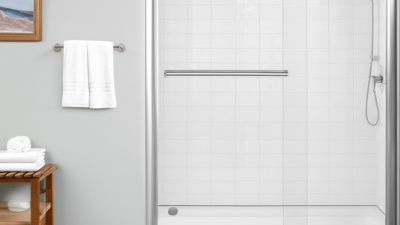
When selecting the perfect sliding shower door for your bathroom, it’s crucial to first determine your
bathroom style and aesthetic preferences. The aesthetic
appeal of your space can greatly influence your choice of fixtures. For instance, contemporary designs often favor
sleek, minimalist glass doors that enhance the feeling of openness and light. In contrast, more traditional spaces
may benefit from framed shower doors that complement classic decor elements. Understanding your personal style
not only helps in choosing the right door but also aligns with broader trends in home aesthetics.
In terms of market trends, the U.S. faucet market is projected
to grow from $6.27 billion in 2025 to $9.38 billion by 2032, indicating a rising interest
in bathroom fixtures that enhance both functionality and aesthetics. When selecting shower doors, consider factors
such as the available space, desired privacy level, and ease of cleaning.
Tips:
When selecting a sliding shower door, understanding the different types available is crucial for achieving both functionality and style in your bathroom.
There are primarily three types of sliding shower doors: bypass doors, bi-fold doors, and curvilinear doors.
Bypass doors consist of two panels that slide past each other, making them a space-efficient option for smaller bathrooms. According to a report by the Home Improvement Research Institute, nearly 65% of homeowners prefer bypass doors for their practicality and ease of use.
Bi-fold doors, contrastingly, are made of several panels that fold inwards when opened. This is an excellent choice for bathrooms where space is at a premium, as they require less clearance than standard hinged doors. As noted by the National Kitchen and Bath Association, bi-fold doors have seen a 20% increase in popularity in recent years, largely due to their modern aesthetic.
Tips: When choosing a sliding shower door, consider the size and style of your bathroom. Ensure that the door’s material complements your existing fixtures and that the tracks are easy to clean to maintain long-term functionality. Additionally, investing in quality hardware can enhance durability and prevent common sliding issues.
When choosing a sliding shower door, the material used is crucial for both durability and maintenance. Common materials include tempered glass, acrylic, and vinyl, each offering different levels of strength and upkeep. Tempered glass is particularly popular due to its resistance to scratches and its ability to withstand high temperatures. It's easy to clean with regular glass cleaners, making it an excellent choice for busy households.
Acrylic shower doors, while lighter and more affordable, may require more frequent cleaning as they are prone to scratching and can dull over time. They are available in various colors and styles, allowing for creative flexibility in your bathroom design. Vinyl, on the other hand, offers a budget-friendly option and is relatively easy to maintain. However, its durability may not match that of glass or acrylic. Therefore, evaluating your lifestyle, budget, and aesthetic preferences will help you select the ideal material for your sliding shower door, ensuring it complements both your bathroom style and functional needs.
When selecting the perfect sliding shower door, size and space requirements must be prioritized to ensure a seamless fit and functional design. According to a report from the National Kitchen & Bath Association, 70% of homeowners prefer sleek, space-saving designs that enhance their bathroom's aesthetics while maximizing usability. In smaller bathrooms, a compact sliding door can provide an illusion of increased space, effectively utilizing the available square footage without compromising on style.
Additionally, proper measurements are crucial during the installation process to avoid costly renovations. Industry standards suggest that the width of the shower entry should be at least 22 inches to ensure comfortable access, while the height should align with the overall design of the bathroom. As residential space continues to shrink, the demand for multifunctional, space-efficient solutions in bathroom fixtures is becoming more pronounced, making the careful selection of a sliding shower door not just a matter of preference, but a necessity for modern homeowners.
When selecting the right sliding shower door for your bathroom, evaluating hardware and design features is crucial for functionality. According to a 2022 report by the National Kitchen & Bath Association (NKBA), over 70% of homeowners prioritize functionality alongside aesthetics when planning a bathroom remodel. This highlights the importance of choosing a shower door that not only fits the style of the bathroom but also meets the practical needs of daily usage.
One essential consideration is the type of hardware used, particularly the rollers and tracks. High-quality, corrosion-resistant materials like stainless steel enhance durability and ensure smooth operation, which is vital for preventing wear and tear over time. The NKBA's survey indicates that sliding doors can accumulate 25% more daily use than traditional hinged doors, making strong hardware essential. Furthermore, checking for adjustable rollers can help accommodate uneven flooring, ensuring a seamless and functional installation that maintains long-term performance without frequent repairs.
Design features also play a significant role in enhancing usability. Consider options like tempered glass for safety and easy cleaning, which can reduce maintenance time significantly—by up to 50%, according to the Glass Association's latest findings. Transparent or frosted glass can also influence the visual appeal while providing privacy. By balancing these hardware and design features, you can achieve a sliding shower door solution that complements your bathroom’s style while ensuring optimal functionality.


